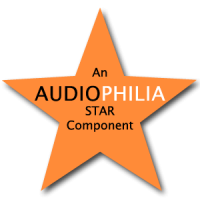SG-200
From: John Schwenker
Sent: Monday, February 19, 2018 5:12 PM
To: Peter Ledermann
Subject: Re: Good news, A concern: Re: Your Soundsmith SG-200
Hi Peter,
If you would like to use any of the following as a testimonial, please feel free… Cheers, John Schwenker
Having had the SG cartridge in my system for about 11 months, I now feel like it is high time I contribute some solidly meaningful listening impressions. I have played nearly 400 albums—the luxury of more than one per day.
First thing I’d like to say is that there is a range of fundamental performance characteristics which audiophiles can agree have major importance. They are those multiple requirements that all serious audio components should achieve to a high level of accuracy and definition. That said, I then think there are certain things or sets of things that some of us listen for more intently than others, and vice versa for other fans of audio of a different stripe. So within that overall range of performance characteristics there can be some disagreement as to what trades one may be willing to make to achieve greater perfection in one’s strongest areas of desire.
In my particular case, I have always been thrilled with the palpability of sound, particularly quite transient sounds, when reproduced by devices capable of maintaining above average temporal alignment of information. At this sort of thing the SG not simply hits the mark of distinction but owns the mark. It offers palpable percussion to die for. Classic square-wave-like producers like snare drums have never sounded better. And even plucked strings, Gasp!! Soundstage presentation is beautifully realized. Bass detail is delivered with great immediacy, precision and authority.
At my time of purchase one concern I had in mind was level matching. Turns out that the non-adjustable SG-200 is well matched indeed with the outputs of other line level sources on my system. Thanks to Soundsmith, for good adherence to those specs.
With the lack of any “motor” in the cartridge comes the benefit of virtually no noise in the circuit or being picked up by it—a particularly difficult thing for higher end carts with micro magnets and coils of any arrangement to achieve. The quietness of the SG is astoundingly good.
Another beautiful surprise has been the rather dramatic increase in clarity of vocal sibilants—not an area I had thought was particularly lacking in my older devices. Ditto with the clarity of cymbal signals, for both transient and sustained cymbals. Other carts I’ve used have seemed to do a good job reproducing all the right frequencies but now cymbals on those LPs seem to have a distinctly more focused and genuinely metallic sound. I’m tempted to think this is quite connected with the good nature available from the primary resonant frequency being driven significantly well up out of hearing range.
On pivoted tonearms, getting the anti-skate force set right is rewarding. I found the Frank Schroeder methods detailed on the Soundsmith pages to be an excellent place to start. That got me to a zone where hearing any effects that might indicate non-ideal performance was a rare thing. Only later did I hear a little distinct image imbalance on the highest frequencies of very highly modulated vocals, showing up in one channel vs another, L-R. In my case it was indicating the left channel was tracking lighter, requiring tunings in the direction of a further reduction in a-s force from the Schroeder guided setting. Subsequent listenings showed the effect was taken care of. I can recommend strong vocals as being quite useful source material… In my case Cat Stevens, Mona Bone Jakon and Tea For The Tillerman, both good re-issue LPs, seemed particularly revealing.
In the area of "you never get everything”, the SG response flatness near the ends of the canonical 20-20kHz band could indeed be flatter relative to what some cartridges can do. Back to what I had said at the beginning, if one is a listener who is relatively sensitive to this particular area of performance, then it would make sense to be a little extra cautious—taking the steps to audition with systems one has some familiarity with. For myself, in the long run and even in the short runs of hearing it at shows and at first in my setup, it has moved between being a non-issue and one that is so far overcompensated by the other things the SG does right. So much so that you’ll have to pry my SG out of the grip of my cold dead tonearm.
Philosophers, wise men, counsel us to love beings not things—but I am having a tough time with that concept with this device in use!
Associated equipment: VPI HW-19 Mk4 TNT, and SME IV.5i arm, both with various DIY hot rodding mods*; Nelson Pass Adcom GFP-750 passive pre; Ric Schulz EVS modded Behringer DCX2496 used for subs cover and time alignment control only; Hypex NC400 power amps; Thiel 3.7 mains and Thiel SS1 subs; (aux reference: Stax Lambda Pro phones) (*some mods documented in detail on AudioCircle)






